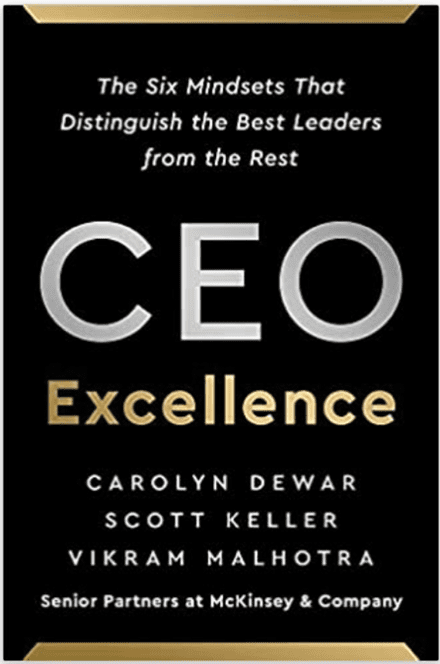Unsurprisingly, the word “excellence” features often in my coaching conversations with most of my clients, not least CEOs and C-suite executives. Sometimes these conversations are precursors of explorations of perfectionism. Sometimes they can be a presentation of imposter syndrome. Mostly, however, they lead into searching conversations about what it takes to grow into a truly excellent leader – a leader set apart from the crowd.
There are many resources available to support effective coaching conversations in this arena. I have been delighted to add one such to my toolkit – the recently published CEO Excellence: the six mindsets that distinguish the best leaders from the rest.

Few who have occupied the CEO or C-suite office, nor those who support them, can fail to underestimate the magnitude of the task. The statistics speak for themselves. Thirty percent of Fortune 500 CEOs last fewer than three years. Two out of five new CEOs are perceived to be failing withing eighteen months. Project that into the start-up and scale-up domains and the challenges, while perhaps of a different order, can be no less impactful, indeed debilitating.
It is into this context that this book is offered – and welcomed – as an insightful resource. The authors, all Senior Partners at McKinsey, bring a wealth of deep-rooted and practical experience to resource and inspire – and maybe unlock – the senior executive.
This is no theoretical tome, though it does have intellectual substance. Rather, it is a deep analysis which distils from their own experience, and viewed through the eyes of leading CEOs, strategies which can transform the impact of the CEO (and C-suite executive) to evoke excellence.
The strategies are sifted and presented as six distinct mindsets which together can shape excellent praxis. They are:
- Direction-setting mindset – be bold
- Organisation alignment mindset – treat the soft stuff as the hard stuff
- Mobilising leaders mindset – solve for the team’s psychology
- Board engagement mindset – help directors help the business
- Stakeholder connection mindset – start with why?
- Personal effectiveness mindset – do what only you can do
The framing of these mindsets is immensely valuable in itself but what really transforms the impact of the book are the three practices suggested under each mindset which locate the mindsets within recognisable domains, and which are excellently illustrated through the experiences of notable CEOs. To further locate the reader in their real-world context, the authors end the book with some immensely useful tools to aid reflection on CEO priorities and effectiveness.
I have valued introducing the insights of this book with my coaching clients, both in terms of structuring some of our conversations, but also as support reading for them. We rarely approach the mindsets in the order presented but we always attend to each and then bring them together as a coherent framework. The assessment tools are well-worth giving serious attention.
I have yet to share this with a client who has not found it insightful, energising, and hopeful. I commend it to coach colleagues as a resource, and to beleaguered CEOs and C-suite executives for inspiration.



